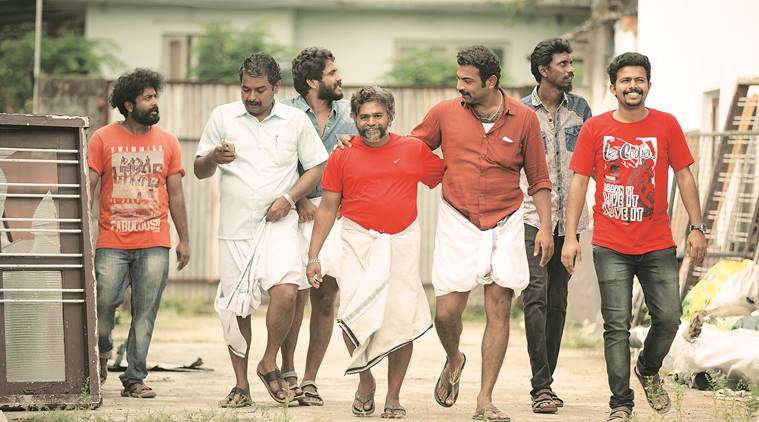Click here to follow Screen Digital on YouTube and stay updated with the latest from the world of cinema.
Gangs of Angamaly
As Angamaly Diaries makes waves in Malayalam cinema, director Lijo Jose Pellissery talks about its making
 A still from Angamaly Diaries
A still from Angamaly Diaries
IT wouldn’t be an overstatement to say that the 11-minute long climatic sequence in Angamaly Diaries will probably make it to film-school syllabuses across the country. Shot in a single, breathless take, the sequence teems with over a thousand people — junior artistes mixed in with Angamaly residents — and features a chase sequence that ends, quite literally, in the most explosive way possible. It’s not possible to discuss this sequence without spoilers, so one must be content with stating, that for dramatic impact, it is matched by few other film climaxes.
“We shot it over two days, and things kept going wrong on the first day,” says director Lijo Jose Pellissery, adding, “It wasn’t an easy sequence to shoot because we had to show the characters running through a festival procession and managing such a huge crowd was a big task. And we needed that crowd, or the scene would not have been effective.” Things fell into place on the second day, however, and Pellissery got the perfect, dramatic end. “I wanted the audience to not be able to take their eyes off what’s happening on the screen,” he says.
Superficially, the film is about a gang of ruffians who, when they’re not having love affairs and beating up rival gangs, are mopping up plate after plate of the erachi (meat) curries and kappa (tapioca). In reality, however, it is the story of Angamaly itself and is based on a series of vignettes written by actor Chemban Vinod Jose, a native of the fast-growing town. The film, shot by Gireesh Gangadharan, makes use of the region’s folk music, religious and cultural traditions, the local dialect, sense of humour and, most memorably, it’s food, to bring the town to life on screen.
No wonder that the movie has managed to make a splash even beyond Kerala’s borders, and that screenings in Mumbai and Delhi also continue to draw a large audience. Angamaly Diaries has, moreover, come at exactly the right moment, when a national audience, hungry for good cinema, has developed an appreciation for the “new wave” in Malayalam cinema, represented by films such as Drishyam (2013), Premam (2015) and Kammattipadam (2016).
Growing up in Chalakudy, a town adjacent to Angamaly, Pellissery says he had all the advantages that came with being the son of well-known theatre personality, Jose Pellissery. “I grew up in an atmosphere filled with discussions about theatre and art. I knew early on that I wanted to be a filmmaker. In fact, I wanted to enter the industry as an assistant director right after completing Class X,” he says. His father advised him to complete his education before making any career decisions, and Pellissery did so. But after completing his MBA, he decided it was time to do what he loved — writing and directing movies.
Pellissery is not one to shy away from risks. His debut film Nayakan (2010), a revenge drama about a Kathakali artiste’s son who joins the underworld, was greeted with enthusiasm by critics for the originality of its plot and its bold storytelling, as was his second, the crime thriller City of God (2011). Neither film, however, did well commercially, and success came to Pellissery only with 2013’s Amen, a rural fable that brimmed over with warmth and humour. The movie, which won him awards, was one of the most successful Malayalam films to release that year and set the stage for high anticipation of Pellissery’s next. But the gangster comedy Double Barrel (2015) proved to be another box-office disappointment, despite favourable reviews.
Pellissery, however, does not look back with regret. “I’ve tried to do something different with each film. As soon as you realise you’re doing a particular thing well, you should try to do something new. Only two of my films (including Angamaly Diaries) have worked in the market, but that doesn’t mean I see the other three as failures. Perhaps, the market was not ready for those films at that time,” says the 38-year-old.
Unlike in Pellissery’s previous films, there are no major stars in this one. It features 86 unknown faces, each of them essaying fleshed-out characters, with their own backstories and motivations. In box-office terms, that wasn’t exactly a safe bet, but as Pellissery explains, it was something that had to be done and thankfully, he had producers who backed him.


- 01
- 02
- 03
- 04
- 05
































